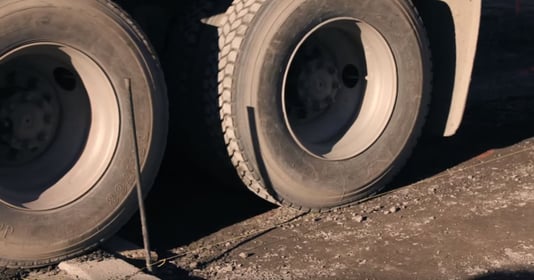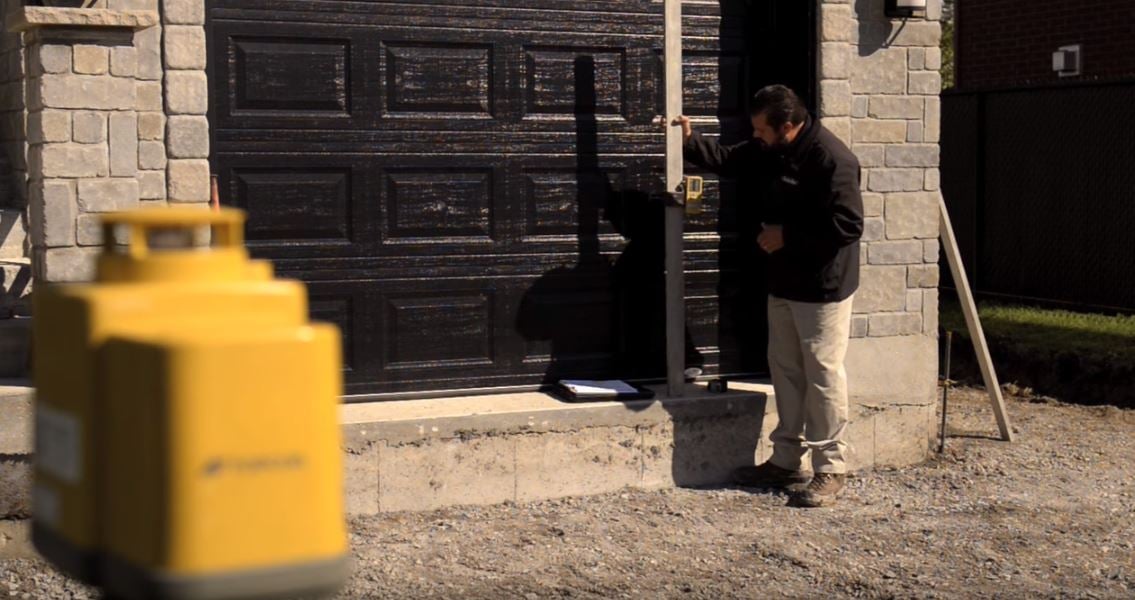In part 1, we covered pre-planning, excavation and adding a chemical amendment. Now, Paver Pete demonstrates how to ensure uniform excavation, install a geotextile fabric and grade the base properly.
Ensuring uniform excavation
Paver Pete discusses ways of obtaining a uniform excavation.
In order to ensure a uniform excavation, a benchmark needs to be set at the garage door.
The excavation should mirror the finished graded pavement.
A uniform excavation will allow proper expansion and contraction during the freeze-thaw cycles and proper bearing of the vehicular traffic.
Start by setting and marking the benchmark at 0+0.
For this project, we measured 4 inches down from the benchmark to get 0 minus 4.
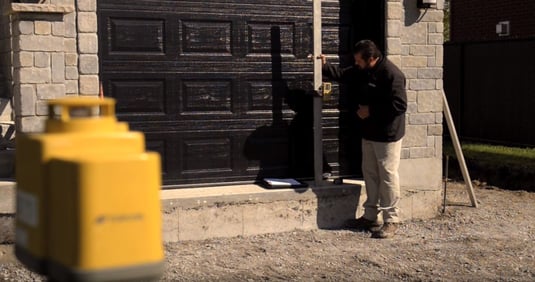
For more information on how to plan an excavation and shoot grades, click here.
Geotextile Fabric
We discuss the advantages of installing a geotextile fabric.
The type of geotextile we used for this project provides more advantages than a nonwoven fabric that is only a soil separator.
It has bilateral tension ability and biaxial geogrid strength to bridge minor differential settlement of the subgrade.
In this application, the engineer specified only a 1-foot base versus the typical 2 feet used in this environment.
The fabric provides additional integrity for the base material.
It costs an extra 0.20-0.25$ a square foot, but there's no additional labour and less chance of callbacks, resulting in more savings.
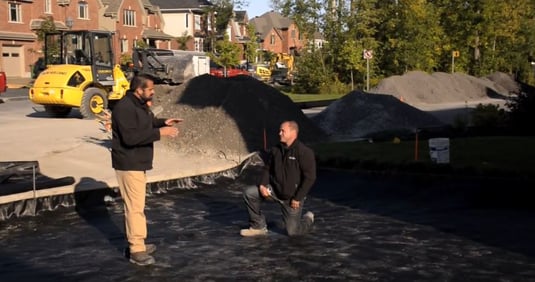
Gradation of the base
Paver Pete explains how to properly grade a base for a paver driveway installation.
Proper grading allows uniform freeze thaw and bearing ability of our base.
It can be achieved by using string lines and grade stakes. The industry tolerance for total thickness variance is +/- 3-4”. The smoothness of the finished grade should respect the +/- 3/8” over 10’ rule. This is the same for finished grade of pavement.
Here, we marked areas to determine what needs to be fixed in order to have the same height for our bottom of excavation, top of base and finished grade.
Screeding the sand and setting the base right is important in an interlocking pavement application, as opposed to asphalt, where compaction and the use of a geotextile are not required.
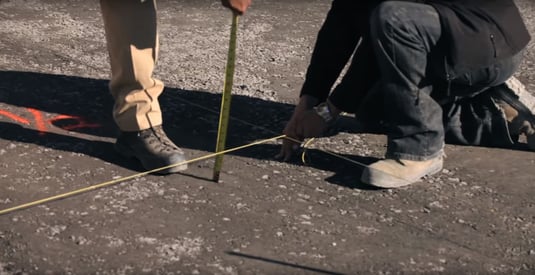
Proof roll density test
We demonstrate a way to verify the level of density by performing a proof roll density test.
The engineer we consulted for this project specified that a proof roll test should be performed to evaluate the level of density of the aggregate base.
This is done by driving a loaded biaxial truck over the base and looking for imperfections that don’t return to their original shape.
If no deformation occurs, it tells us that we have a proper level of density.
